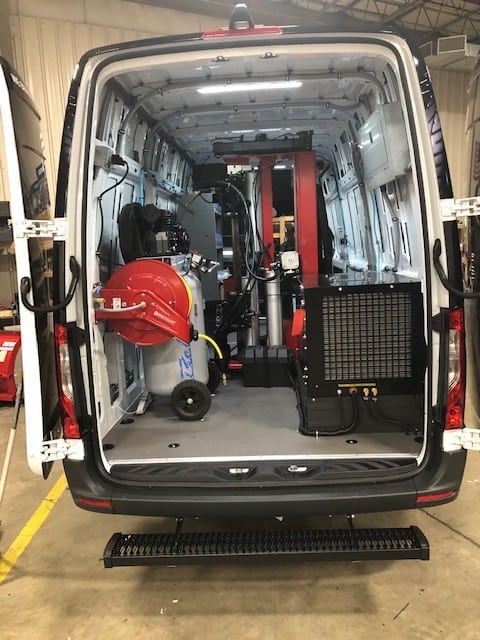Premium Mobile Tire Replacement Las Vegas - High Quality Assured
Tire Service: Proven Techniques for Ideal Tire Maintenance and Treatment
From making certain correct tire pressure to regular rotation and positioning, there are proven approaches that can dramatically prolong the lifespan of your tires and enhance general driving experience. Let's dig into the world of tire service and uncover the tricks to keeping your tires in excellent shape for the lengthy haul - Flat Tire Repair Las Vegas.
Significance of Tire Pressure
Sufficient tire pressure advertises much better fuel performance, as under-inflated tires can lead to boosted rolling resistance, creating the engine to function tougher and take in more fuel. Correct tire stress guarantees even walk wear, enhancing tire longevity and saving cash in the lengthy run by delaying the requirement for premature replacements. Consistently readjusting and examining tire stress, especially before lengthy journeys, is a simple yet efficient way to enhance vehicle efficiency, extend tire life-span, and prioritize safety and security on the road.
Tire Turning Standards
When taking into consideration tire turning standards, it is important to recognize the importance of this upkeep task in maximizing tire life expectancy and preserving optimum lorry performance. Tire rotation includes changing the setting of each tire on a car to guarantee also step wear. Front tires tend to wear much more quickly than back tires due to steering forces, making normal turning important for balanced wear patterns. The advised turning pattern differs depending upon whether a lorry is front-wheel, rear-wheel, all-wheel, or 4x4. Typically, tires need to be rotated every 5,000 to 7,500 miles, or as suggested in the vehicle manual. Ignoring tire rotation can cause uneven wear, influencing handling, grip, and potentially compromising lorry safety and security. By sticking to proper turning standards, vehicle drivers can prolong the life of their tires, enhance fuel performance, and improve total driving experience. Routine turning is an easy yet efficient upkeep method that adds substantially to tire long life and automobile efficiency.

Benefits of Wheel Positioning
Ensuring appropriate wheel placement after tire turning is important for keeping balanced wear patterns and making the most of vehicle performance. Wheel positioning describes the modification of the angles of the wheels to the supplier's specifications. Among the vital benefits of wheel positioning is improved guiding and taking care of feedback. When the wheels are properly aligned, it reduces steering initiative, guaranteeing a smoother and extra regulated driving experience. In addition, proper wheel placement assists to expand the lifespan of your tires. Misaligned wheels can trigger uneven tire wear, resulting in premature tire replacement and enhanced maintenance expenses.

Tire Footstep Deepness Inspect
Executing a normal examination of tire step depth is necessary for preserving secure driving conditions and lengthening the lifespan of your tires. The walk on your tires plays an essential role in supplying grip, particularly in unsafe or damp problems. To inspect your tire walk deepness, you can make use of a walk depth scale or the cent test. The suggested walk depth is at the very least 2/32 of an inch. If the tread depth is listed below this limit, it is time to change your tires to guarantee optimal performance and safety and security when driving. Uneven step wear can indicate issues with tire suspension, pressure, or positioning, highlighting the value of normal tread deepness checks. Disregarding to monitor and keep appropriate tread deepness can bring about decreased hold, longer stopping ranges, and a boosted risk of hydroplaning. By including tire tread depth checks right into your routine upkeep timetable, you can drive with self-confidence understanding that your tires remain in top problem.
Seasonal Tire Evaluation
Seasonal tire evaluation is a basic aspect of tire maintenance that makes certain tires are prepared to deal with the challenges positioned by various weather condition conditions. In preparation for winter months, it is important to check the tire pressure routinely as cool temperature levels can create tire stress to go down. By carrying out routine seasonal tire inspections, motorists can extend tire life-span, enhance gas efficiency, and most significantly, make certain a protected driving experience in differing weather condition problems.
Final Thought
Finally, preserving appropriate tire stress, turning tires you could try these out frequently, aligning wheels appropriately, keeping track of step depth, and conducting seasonal inspections are important practices for optimal tire care. By complying with these confirmed techniques, chauffeurs can guarantee their tires last much longer, do much better, and add to top article total automobile safety. It is essential to prioritize tire upkeep to avoid accidents, enhance fuel efficiency, and prolong the life expectancy of tires.
Appropriate tire pressure promotes much better fuel effectiveness, as under-inflated tires can lead to increased rolling resistance, creating the engine to work more challenging and take in more gas.When taking into consideration tire rotation guidelines, it is vital to understand the significance of this maintenance job in taking full advantage of tire lifespan and keeping ideal car efficiency. Seasonal tire inspection is a basic facet of tire upkeep that guarantees tires are prepared to face the obstacles positioned by various weather condition problems. By performing regular seasonal tire assessments, vehicle drivers can extend tire lifespan, boost fuel effectiveness, and most notably, make certain a safe and secure driving experience in varying weather conditions.
In final thought, maintaining appropriate tire stress, turning tires frequently, lining up wheels properly, keeping an eye on step deepness, and performing seasonal inspections are vital techniques for optimum tire treatment.